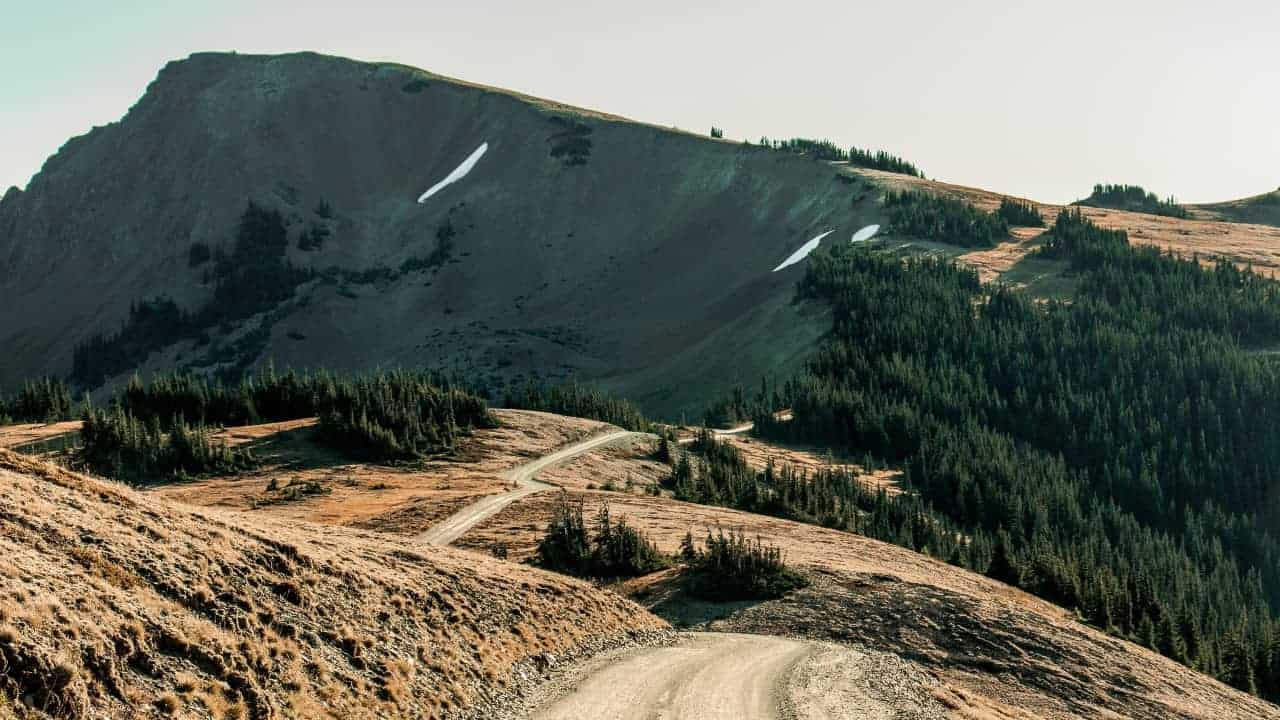Bordered by Puget Sound, the Strait of Juan de Fuca, and the Pacific Ocean and containing spectacular mountains and magnificent temperate rainforests, the Olympic National Forest is among the most scenic landscapes in the United States.
The best way to experience the Olympic National Forest is by pitching a tent among its towering trees. There are countless free dispersed camping opportunities inside this forest and 17 United States Forest Service campgrounds.
These areas allow outdoor enthusiasts to camp high up in the majestic mountains, along the striking coast, or next to stunning lakes. There’s something for everyone – all you need to do is check my list of the best campgrounds and dispersed camping areas in Olympic National Forest and choose a place that matches your requirements and needs.
Map of Dispersed Camping Areas in Olympic National Forest
You can easily find the locations of the best dispersed campgrounds in the national forest using this map.
When Should I Camp in the Olympic National Forest?
You can pitch a tent in the Olympic National Forest, one of the best dispersed camping areas in Washington state, and enjoy its wonders year-round. However, most people camp in this area during the warmer part of the year, i.e., between May and September.
Those who decide to stay here during the winter can expect low temperatures and heavy rainfall, and therefore a not-so-pleasant camping experience.
In addition, most of the campgrounds managed by the Forest Service close during the colder part of the year. Therefore, the only way to camp in the Olympic National Forest off-season is by camping at a dispersed campground.
Another thing worth pointing out is that the camping areas at higher elevations get a lot of snow in the wintertime. This can make a camping trip quite arduous.
Camping here during summertime is your best bet. Not only you’ll be enjoying warm weather but also much longer days.
There’s a catch, though: the campsites will be at their most crowded during this time. However, there are many options, and you should have no trouble finding a free camping spot in the forest.
What Should I Pack for My Olympic National Forest Camping Trip?
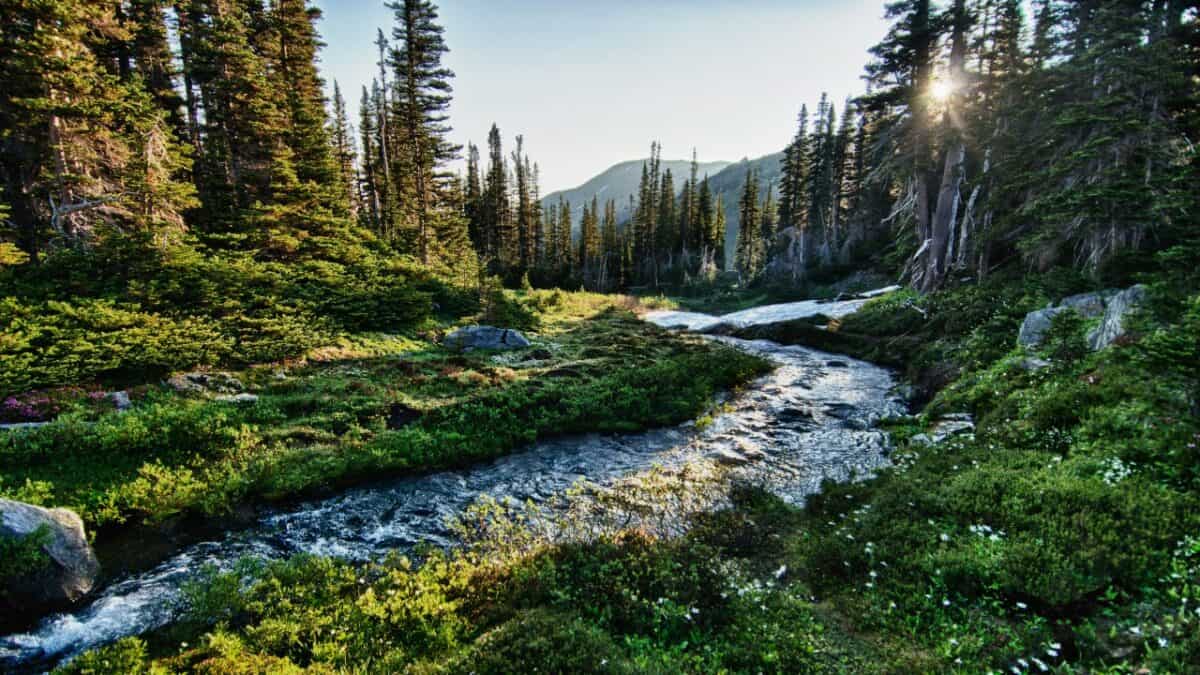
Some pieces of outdoor gear are essential regardless of your camping location. These include a robust tent, a sleeping bag that will protect you from the bugs and the cold, and even a set of comfortable camping chairs if you’re staying with a group.
Here are some other items you’ll want to pack for your dispersed camping trip in the Olympic National Forest:
- Portable water containers – These are essential if you plan staying at a dispersed campground camping instead of a developed campground.
- Camping stove – To prepare delicious campsite breakfasts, lunches, and dinners, you will need a quality camping stove.
- Cooler – Keeping your drinks and provisions cool while camping is essential. A portable and practical camping cooler can significantly help in that regard.
- Map – To learn more about your surroundings, thoroughly explore the area around your campsite, and ensure that you’re camping on public land, you will need a good map. The ones made by National Geographic are often the best.
What about Reservations, Fees, and Permits?
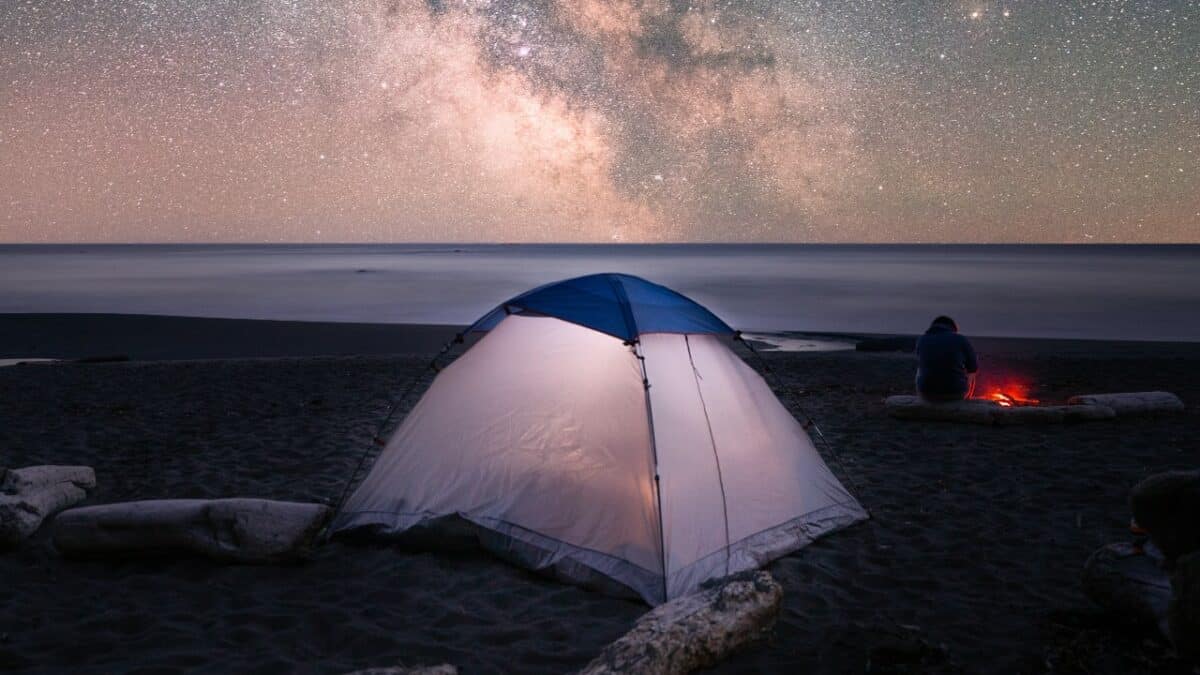
As mentioned above, there are 17 established campsites in the Olympic National Forest.
Of these, 14 are first come, first served. You’ll need to make a reservation to stay at the three remaining campgrounds. These are Coho, Willaby, and Falls Creek.
The camping spots at all three campsites can be reserved through Recreation.gov. Here’s a link for each of them:
No fees or permits are required for dispersed camping in Olympic National Forest.
Still, it’s never wrong to do quick online research and get the most up-to-date information on staying in these areas. An even better solution would be contacting the relevant USFS Ranger District.
Other Essential Considerations
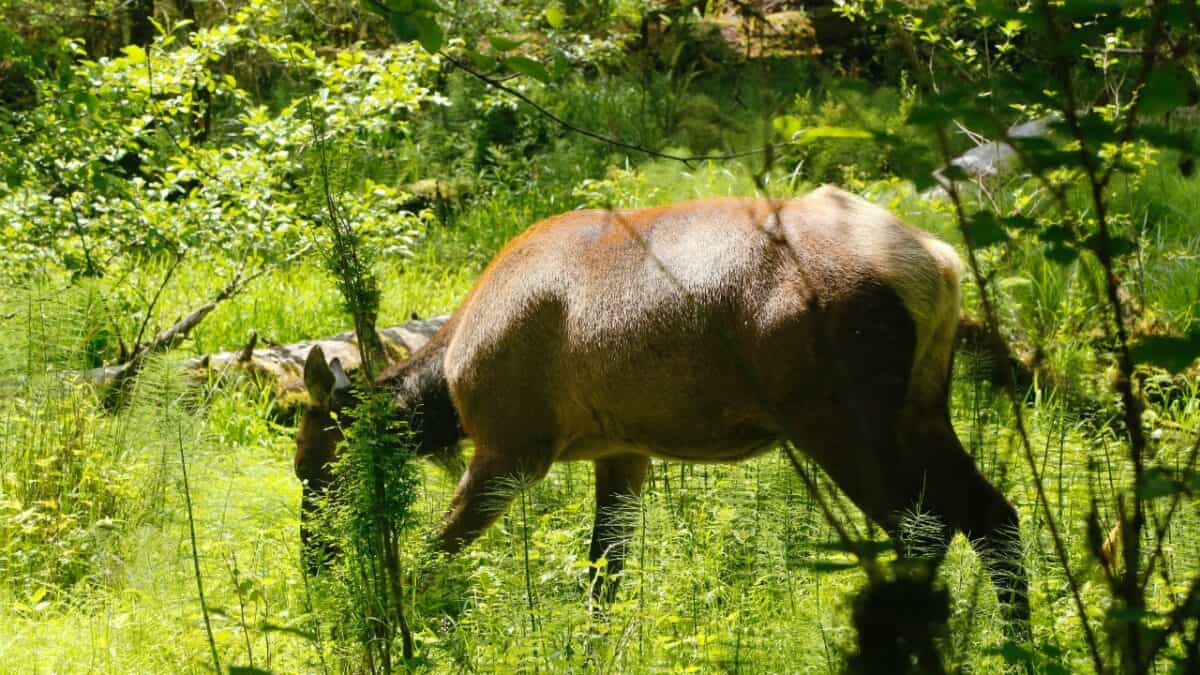
Ranger Districts – As I said above, giving a call to a relevant Ranger District is the best way to get camping advice and obtain the most up-to-date intel on the current camping conditions and regulations.
Here’s the contact information for the three Ranger District offices in the Olympic National Forest:
Environmental Impact – This part of Washington State is incredibly popular with hikers and campers. Most of the campsites in Olympic National Forest are full or near-full during summertime.
Everyone who decides to camp here must do so in the most responsible manner possible. Do your best to leave the camping spot in a better state than you found it.
The Best Established Campsites in Olympic National Forest
There are 17 established campsites located throughout Olympic National Forest. To make navigation easier, I’ve separated the campsites into several distinct clusters.
To find an Olympic National Forest campsite that matches your personal needs and requirements, you’ll need to consider several factors. Some of these are the type of camping setup and the area you’d like to explore.
Fortunately, there are phenomenal campsites for every style of camping – RV, trailer, tent, and everything in between. And while I’ve covered each of these places in great detail later in the article, I’ve also highlighted the ones that are best for several specific styles of camping:
- Best for Families – Seal Rock Campsite
- Best for Seclusion – Gatton Creek Campsite
- Best for RV Camping – Satsop Center Campsite
- Best for Tent Camping – Dungeness Forks Campsite
- Best Free Campsite – Campbell Tree Grove Campsite
Without further ado, let’s take a closer look at the best established campsites in Olympic National Forest:
Wynoochee Area Campsites
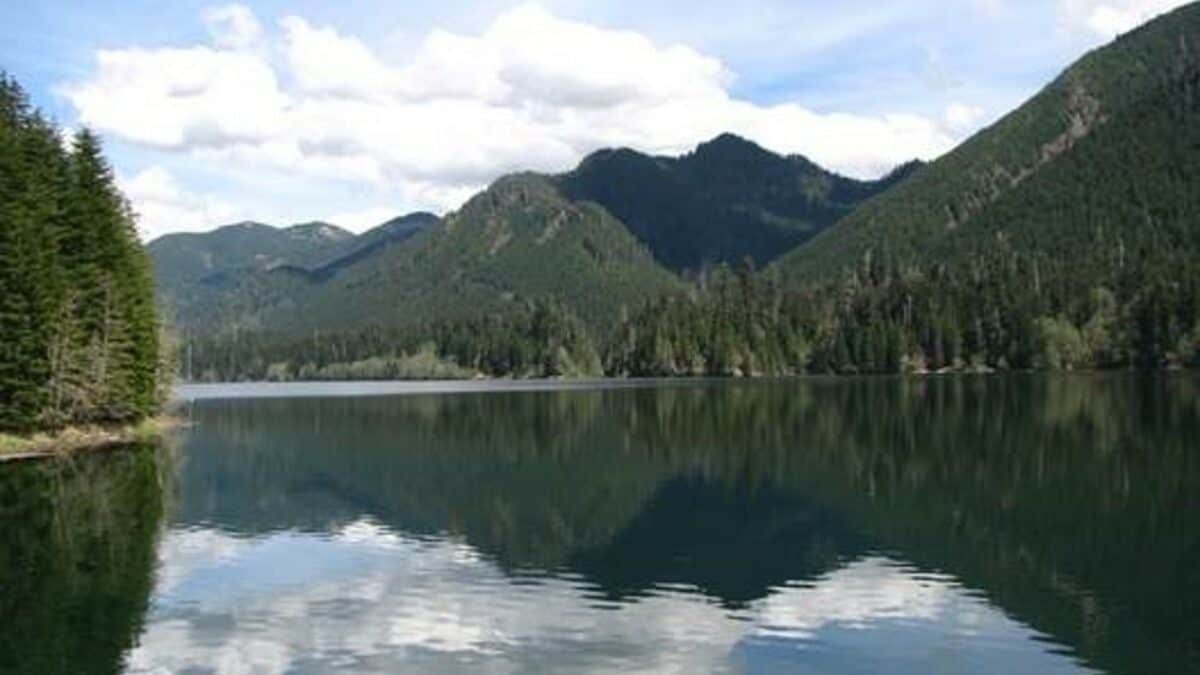
The first cluster of established campsites in Olympic National Forest I’ll be taking a look at is situated in the region surrounding Wynoochee Lake.
Here, you will have two options: the smaller Satsop Center Campsite, situated in the valley, and the larger Coho Campsite, which can be found right on the shore of the lake.
Those interested in RV camping should check out the former of these two campgrounds. It’s one of the few equipped with hookups for recreational vehicles.
| Fee | Amenities | RVs | No. of Camping Spots | |
| Satsop Center Campsite | $20 – $25 per night | RV hookups, showers, flush toilets, drinking water | Yes | 41 camping spots |
| Coho Campsite | $20 – $25 per night | Flush toilets, drinking water | Yes | 56 camping spots |
Skokomish Area Campsites
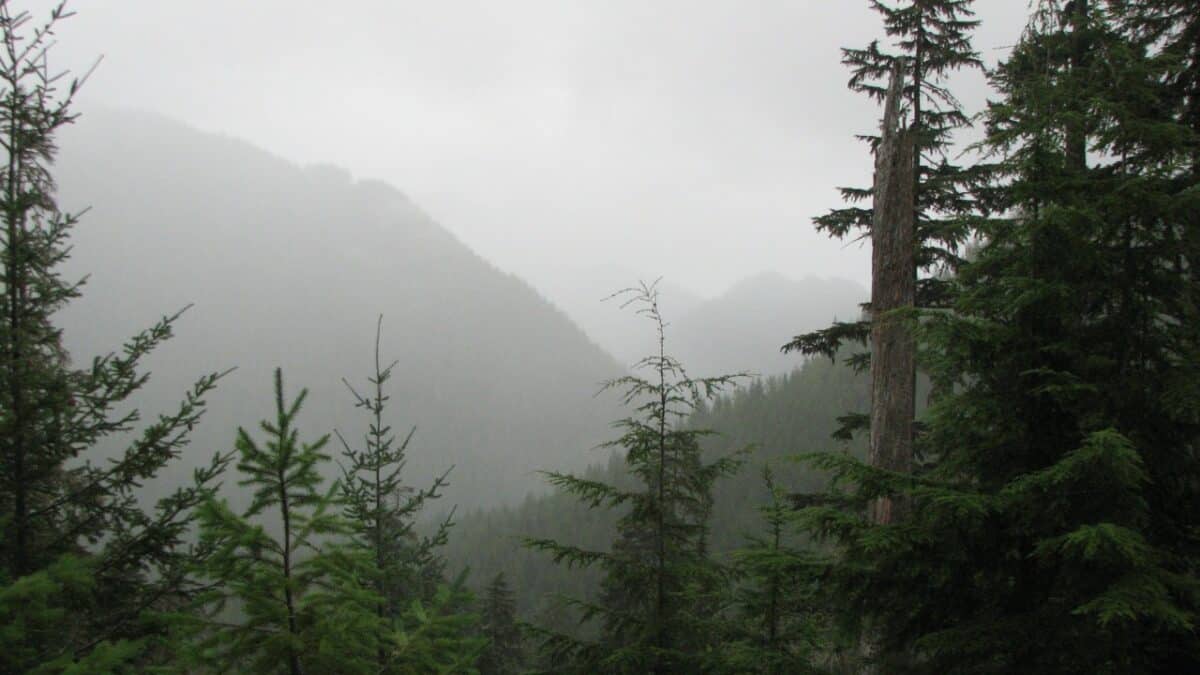
Situated in the southeastern part of the Olympic National Forest, Skokomish Area is trendy with mountain bikers and hikers.
There is only one established campsite here – Brown Creek Campsite. All of its 20 camping spots are located next to the Skokomish River.
Six are open year-round, and several can easily accommodate larger recreational vehicles.
| Fee | Amenities | RVs | No. of Camping Spots | |
| Brown Creek Campsite | $14 per night | Vault toilets | Yes | 20 camping spots |
Quinault Area Campsites
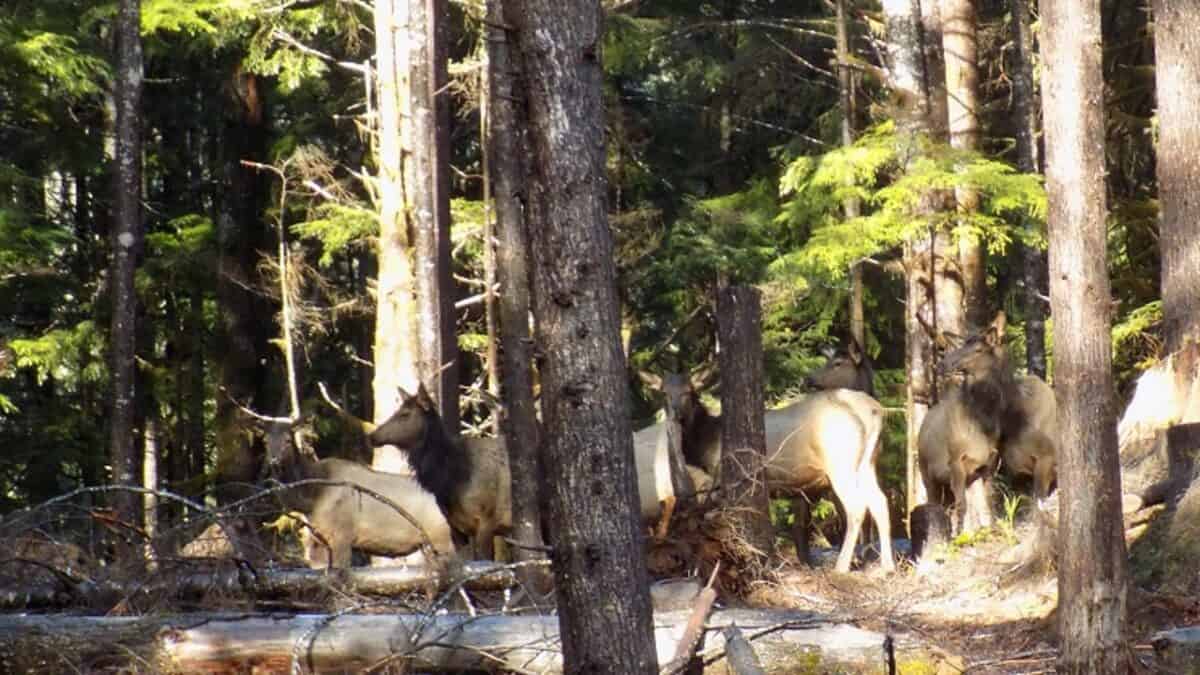
The Quinault region of the Olympic National Forest is well-known for its ice-carved peaks, jeweled lakes, and alpine meadows. It is situated on the southern edge of the forest.
There are four excellent campsites here, with Campbell Tree Grove Campsite being the only one where outdoor enthusiasts can stay completely free of charge. However, you’ll have to arrive there early in the morning to secure a good spot – it’s a bustling place during the summer.
The other three campsites vary in size and available amenities.
| Fee | Amenities | RVs | No. of Camping Spots | |
| Willaby Campsite | $25 per night | Flush toilets, drinking water | Yes | 19 camping spots |
| Gatton Creek Campsite | $25 per night | Vault toilets | No | 5 camping spots |
| Falls Creek Campsite | $25 per night | Flush toilets, drinking water | Yes | 31 camping spots |
| Campbell Tree Grove Campsite | Free | Vault toilets | No | 31 camping spots |
Lake Cushman Area Campsites
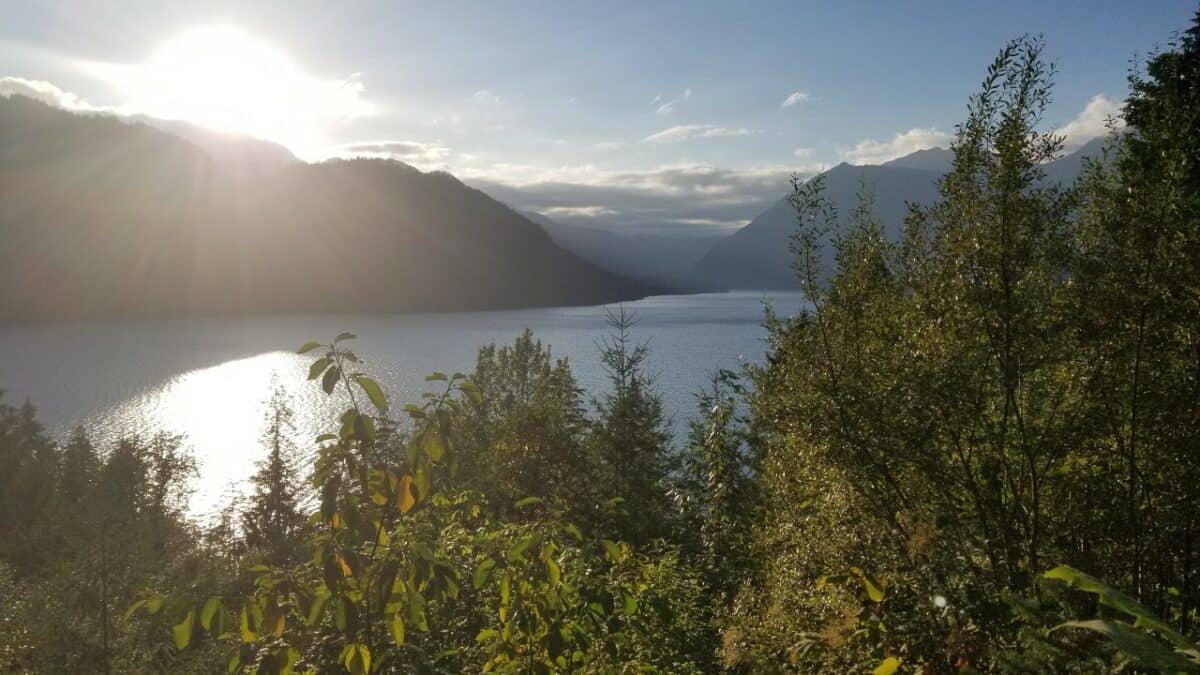
The Lake Cushman area can get very crowded during the summer weekends. It’s popular with campers and those interested in recreational activities on the reservoir.
Situated in the southeastern part of the Olympic National Forest, the Lake Cushman area features the only USFS-managed campsite in the region – Big Creek Campsite.
There are 64 camping spots here, all of which can accommodate RVs (up to 36 ft. in length), trailers, and tents.
| Fee | Amenities | RVs | No. of Camping Spots | |
| Big Creek Campsite | $20 per night | Vault toilets, drinking water | Yes | 64 camping spots |
Hamma Hamma Area Campsites
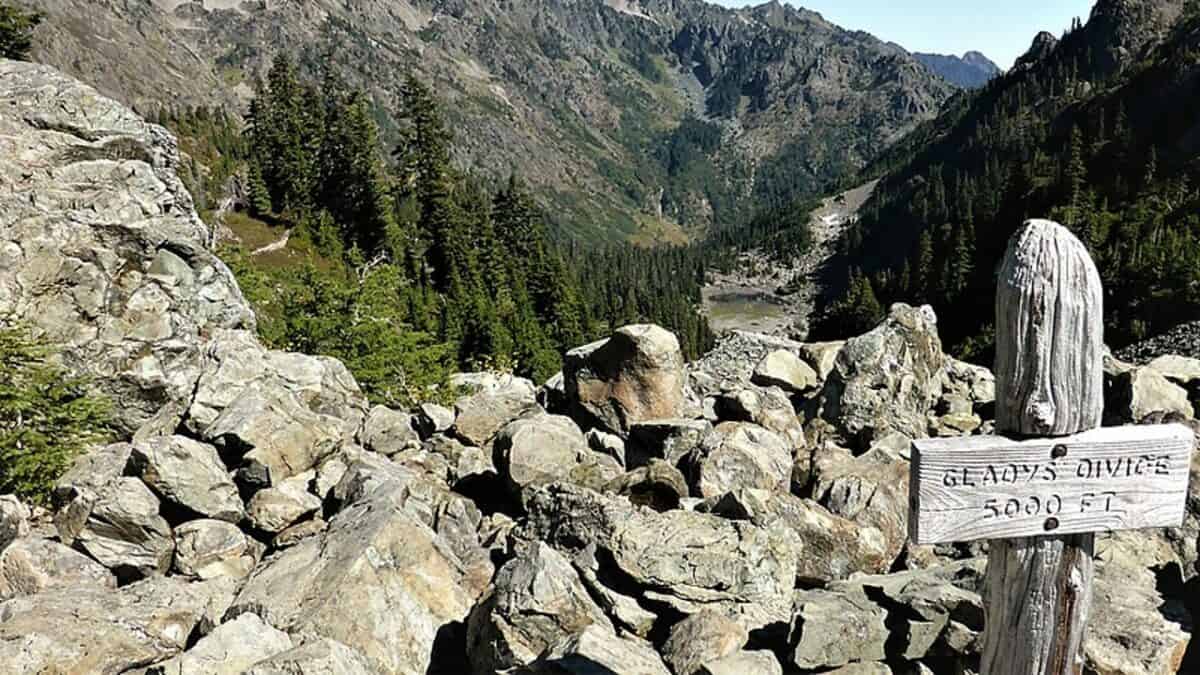
Located on the eastern side of the Olympic National Forest, the Hamma Hamma River Valley features outstanding campsites tucked into the mountains.
This region as a whole is very popular with free campers, too. The reason is that the Hamma Hamma River Valley provides easy access to Mount Skokomish, the highest point of the wilderness area of the same name.
Out of the three campsites listed below, the Lena Lake one is probably the most beautiful (and also the only one that’s free!). Getting there is tricky, though – you’ll have to walk almost 4 miles to reach the place. You will, however, be rewarded for your hike with breathtaking views of pristine wilderness.
| Fee | Amenities | RVs | No. of Camping Spots | |
| Lena Lake Campsite | Free | Pit toilets | No | 29 camping spots |
| Lena Creek Campsite | $14 per night | Vault toilets | Yes | 13 camping spots |
| Hamma Hamma Campsite | $14 per night | Vault toilets | Yes | 15 camping spots |
Forks Area Campsites
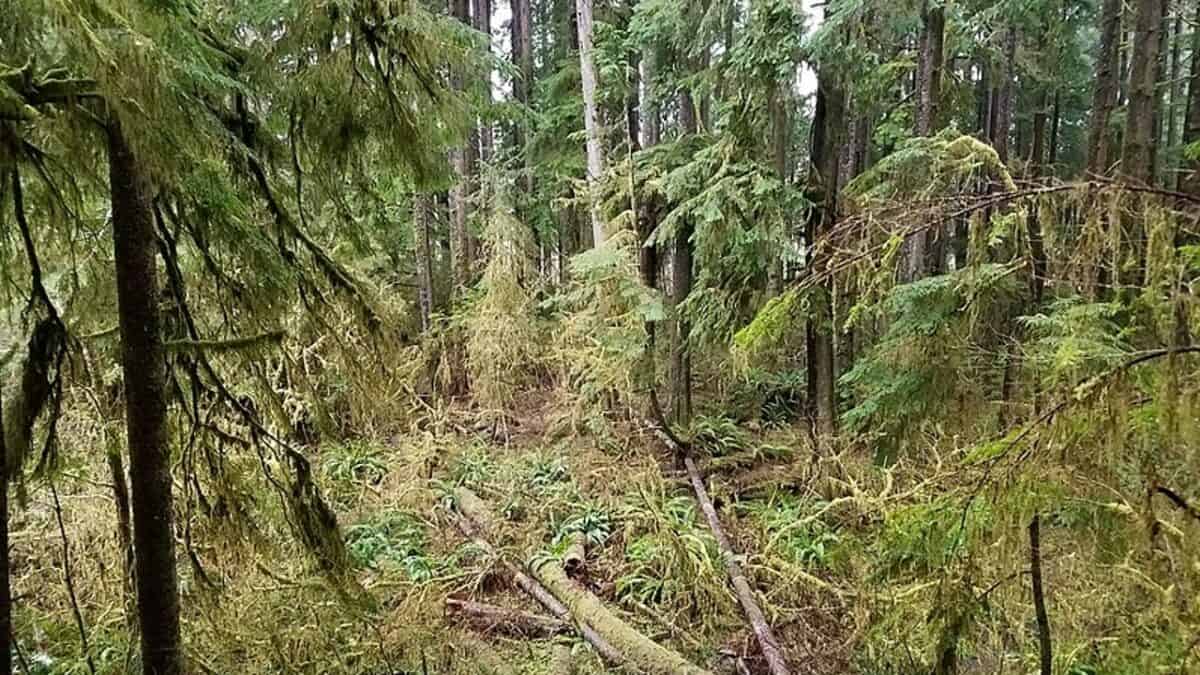
The next camping area in Olympic National Forest is located in its northwestern corner and it features two superb campsites – Klahowya and Klahanie.
The Klahowya Campsite is the larger of the two campsites and provides visitors with tubing opportunities during the summer, as it sits on the Sol Duc River. The Klahanie Campsite, on the other hand, is surrounded by an old-growth forest and provides easy access to the town of Forks.
While staying in the area, check out the Bogachiel Rainforest Trail. It’s a family-friendly trail that leads directly into the Olympic National Park. If you are interested in other beautiful camping areas in the US, check our post on dispersed camping in Sadona.
| Fee | Amenities | RVs | No. of Camping Spots | |
| Klahowya Campsite | $17 per night | Flush toilets, drinking water | Yes | 56 campsites |
| Klahanie Campsite | $10 per night | Vault toilets | Yes | 20 campsites |
Dungeness Area Campsites
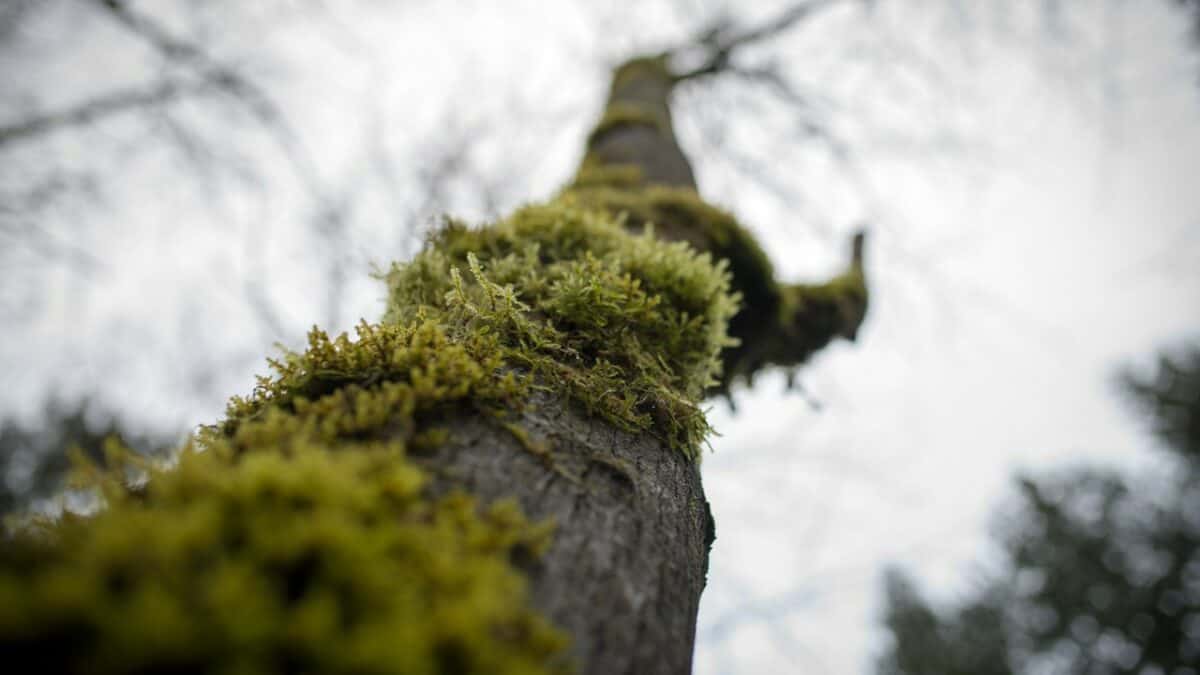
The Dungeness Area, located in the northeastern part of the Olympic National Forest, is the driest place in this region.
Here, you will find only one campsite – Dungeness Forks. It features ten camping spots but is relatively small and can’t accommodate recreational vehicles.
This can also be an advantage, though. Dungeness Area is undoubtedly your best bet if you’re seeking a genuinely quiet and peaceful camping experience in this part of Washington State.
| Fee | Amenities | RVs | No. of Camping Spots | |
| Dungeness Forks Campsite | $14 per night | Vault toilets | No | 10 camping spots |
Duckabush Area Campsites
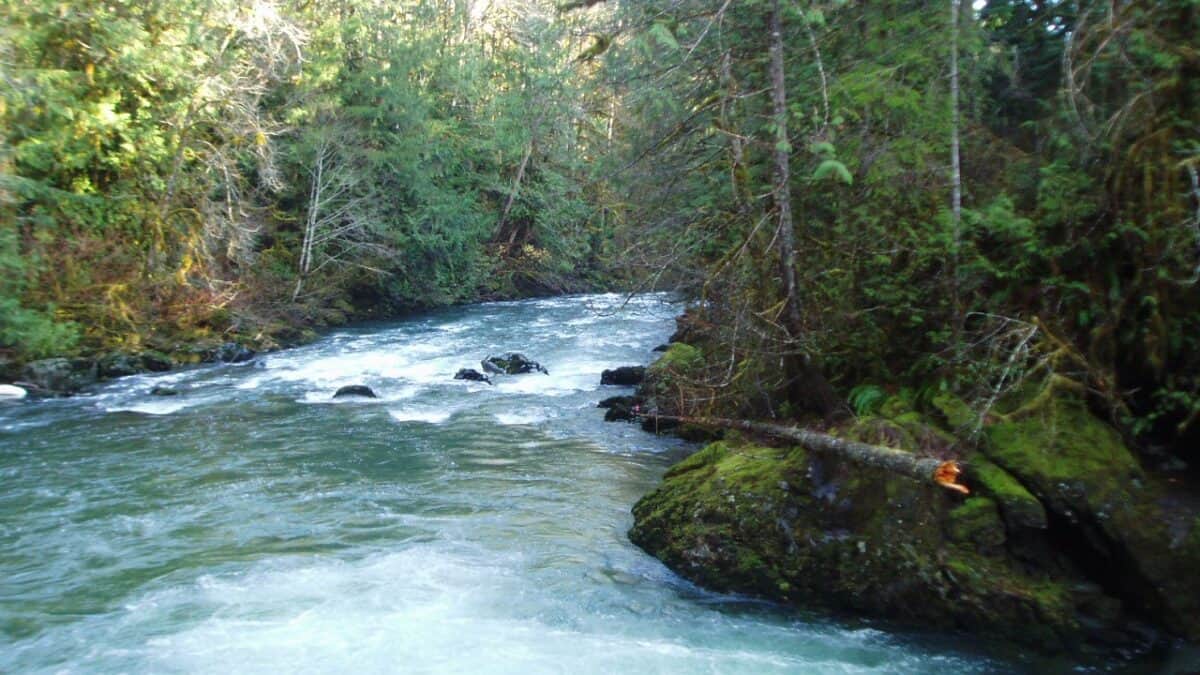
The Duckabush Area of Olympic National Forest is located further inland from one of Washington State’s most famous fjords – Hood Canal.
This is a diverse natural region with a dramatic elevation change. It transitions from Brothers Peak (which rises to 6,842 feet) down to the scenic coast of the Hood Canal mentioned above.
Sitting on the Duckabush River, the Collins Campsite is one of the best options for campers wishing to immerse themselves in this region’s sights, smells, and sounds in solitude.
| Fee | Amenities | RVs | No. of Camping spots | |
| Collins Campsite | $14 per night | Vault toilets | Yes | 16 camping spots |
Dosewallips Area Campsites
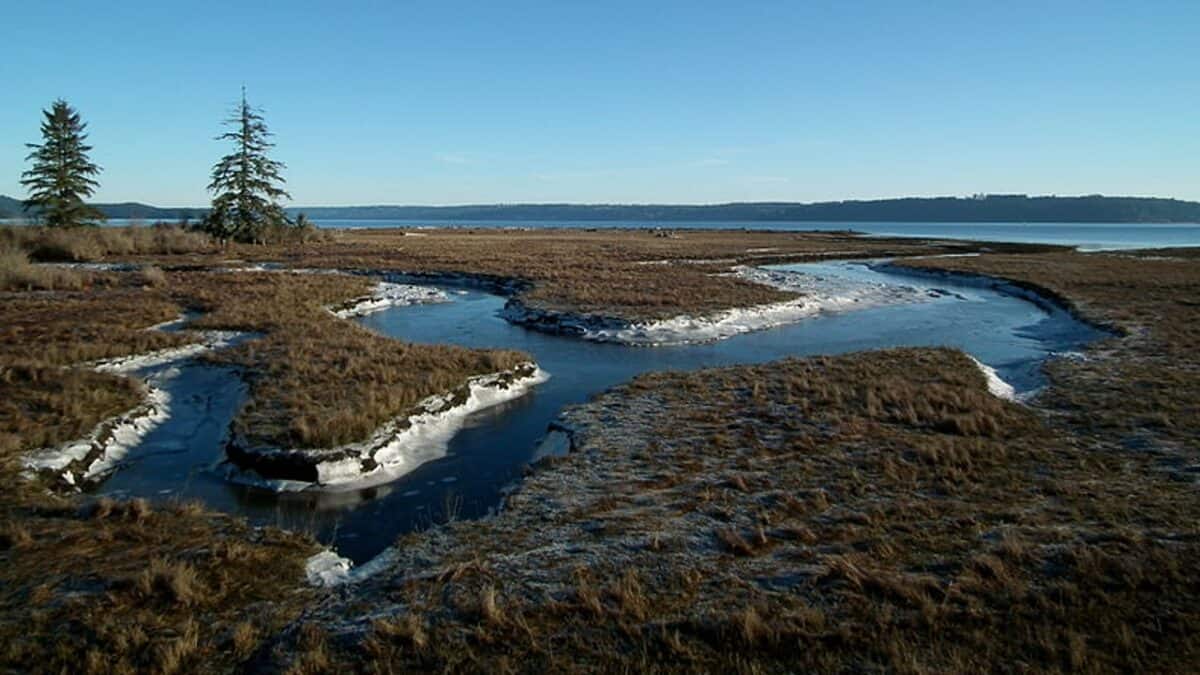
The Dosewallips area is situated on the forest’s eastern edge, adjacent to the Hood Canal mentioned above.
There are two campsites here – Seal Rock and Falls View. Both are pretty close to the small settlement of Quilcene.
Due to its canalside location, the Seal Rock Campsite is very popular and often full or near-full during the summer weekends. Make sure to arrive there early in the day to get a good camping spot.
| Fees | Amenities | RVs | No. of Camping Spots | |
| Seal Rock Campsite | $18 per night | Flush toilets, drinking water | Yes | 41 camping spots |
| Falls View Campsite | $10 per night | Vault toilets | Yes | 30 camping spots |
Olympic National Forest RV Campsites
Of the 17 campsites described above, 12 accommodate recreational vehicles.
However, all of those 12 campsites have fixed length limitations for RVs. Therefore, checking the exact length limitation imposed by a particular camp before heading there with such a vehicle is crucial.
Another thing worth mentioning is that a few of these places feature RV hookups. Here’s a general overview of all Olympic National Forest campsites that accommodate RVs:
| No. of RV Sites | Hookups | Max Length | |
| Satsop Center Campsite | 7 RV sites | 6 | 36 feet |
| Coho Campsite | 46 RV sites | No | 36 feet |
| Brown Creek Campsite | 12 RV sites | No | 21 feet |
| Willaby Campsite | 19 RV sites | No | 16 feet |
| Falls Creek Campsite | 21 RV sites | No | 16 feet |
| Big Creek Campsite | 53 RV sites | No | 36 feet |
| Lena Creek Campsite | 13 RV sites | No | 21 feet |
| Hamma Hamma Campsite | 15 RV sites | No | 21 feet |
| Klahowya Campsite | 56 RV sites | No | 30 – 40 feet |
| Collins Campsite | 10 RV sites | No | 21 feet |
| Seal Rock Campsite | 41 RV sites | No | 21 feet |
| Falls View Campsite | 30 RV sites | No | 35 feet |
The Best Dispersed Camping Areas in Olympic National Forest
Some campers want to avoid the hustle and bustle of established campsites. If you count yourself among them, you’ll be pleased to know that it’s possible to go dispersed camping in Olympic National Forest.
As long as you follow the United States Forest Service regulations, you’ll be able to camp anywhere in this forest. These regulations are:
- Avoid setting up camp in a previously undisturbed area. If you must do so, return the site to its original state.
- Pick places that are as far away from trails and roads as possible.
- Pitch your tent at least 200 feet away from rivers, creeks, and other water sources.
Also, remember that you can camp at two of the 17 established campsites free of charge – Campbell Tree Grove and Lena Lake Campsite.
Elkhorn Dispersed Camping Area
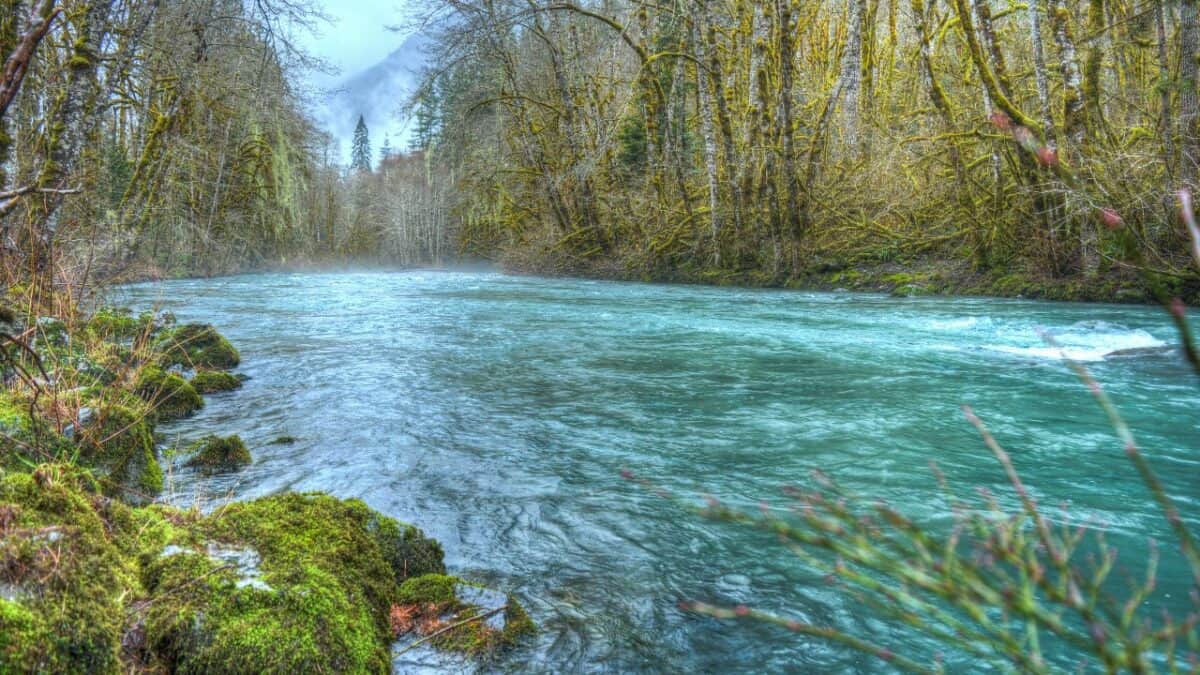
- Map
- Crowds: Busy
- Water: No
- Restrooms: No
This Olympic National Forest dispersed camping area sits close to the scenic Dosewallips River. Campers first have to hike for about a mile to access this peaceful and tranquil place.
Unfortunately, there are no amenities of any type at the Elkhorn dispersed camping area. Follow the Leave No Trace principles while staying there, and pack out all of your garbage.
Hoh Oxbow Campsite
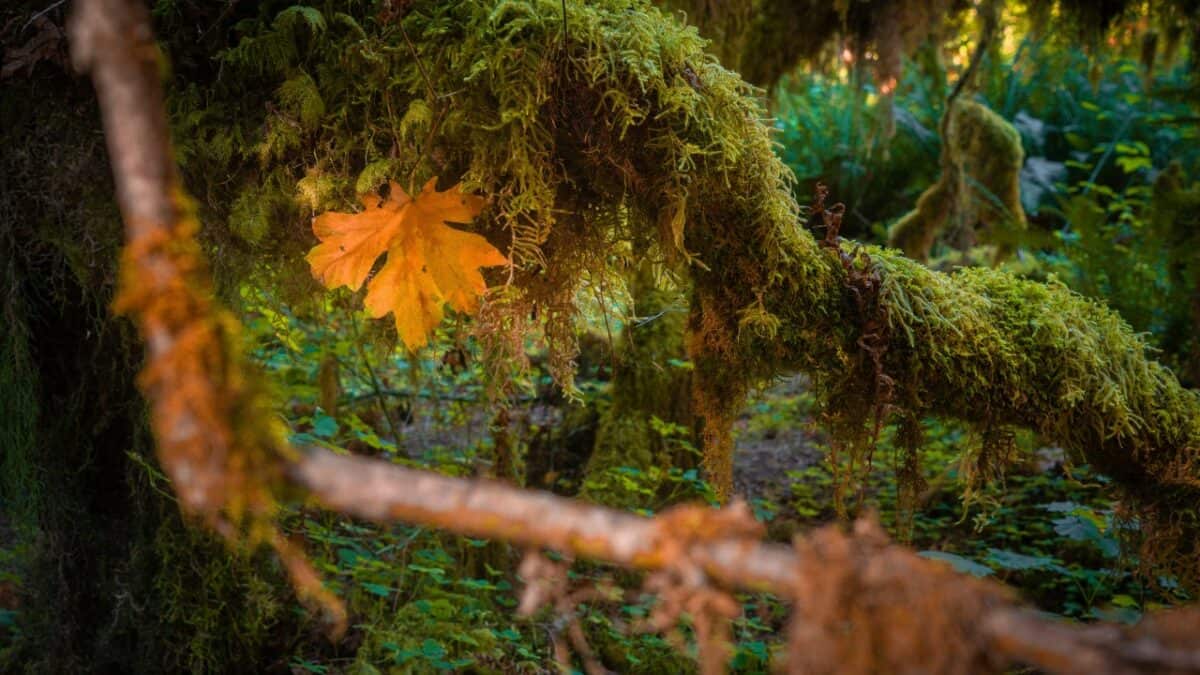
- Map
- Crowds: Busy
- Water: No
- Restrooms: No
While technically not a dispersed camping area, Hoh Oxbow Campsite undoubtedly provides its visitors with the feeling of being “out there”. It’s a small campground where campers can stay “free” of charge and enjoy the wonders of the Olympic National Forest.
While Hoh Oxbow Campsite has no restrooms or access to water, it easily accommodates recreational vehicles up to 30 feet in length. It has eight camping spots in total, all of which are right next to the beautiful Hoh River.
The one catch related to this place is that campers can’t stay there without the so-called “Discover Pass”. However, this pass is a worthy investment – it provides access to a plethora of Department of Natural Resources campgrounds for just $35. See our post on camping near Mt Rushmore as well.
Quinault Ridge Road Dispersed Camping Area
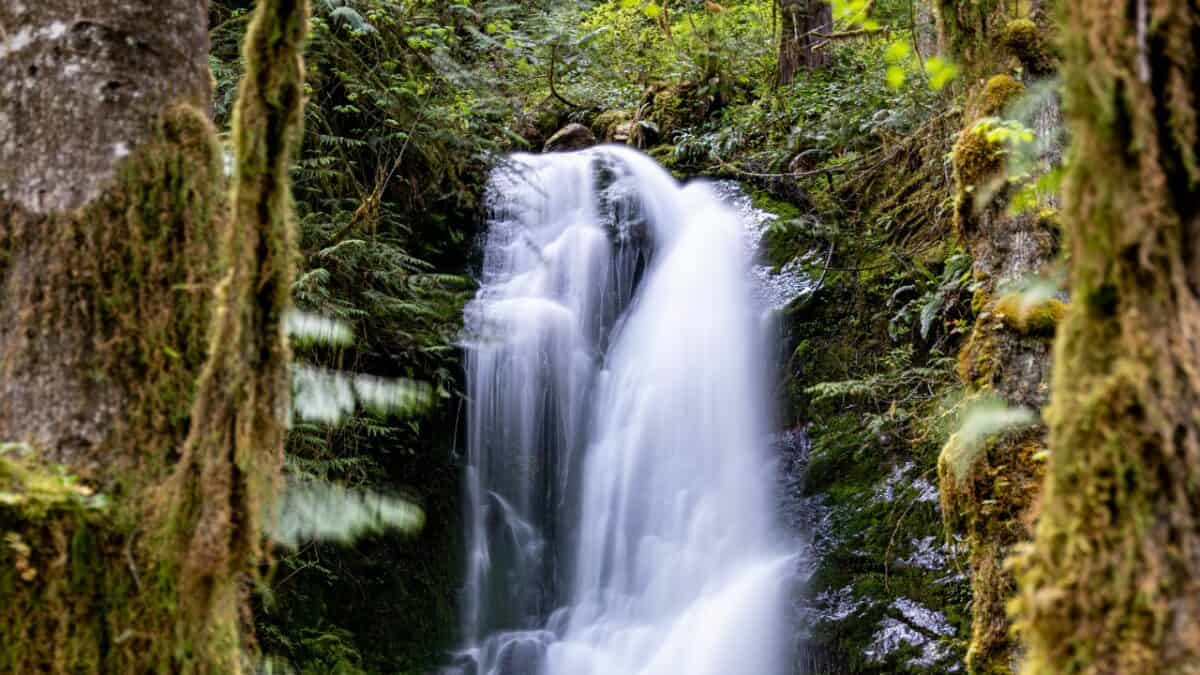
- Map
- Crowds: Busy
- Water: No
- Restrooms: No
Quinault Ridge Road is extremely popular with dispersed campers in the southern part of the Olympic National Forest. You’ll need to arrive here early if you want a good spot – the place fills up very quickly on summer weekends.
The Quinault Ridge Road is situated just off U.S. Route 101. The sites easily accommodate larger trailers and RVs, and the surrounding nature is impeccable.
Beaver Lake
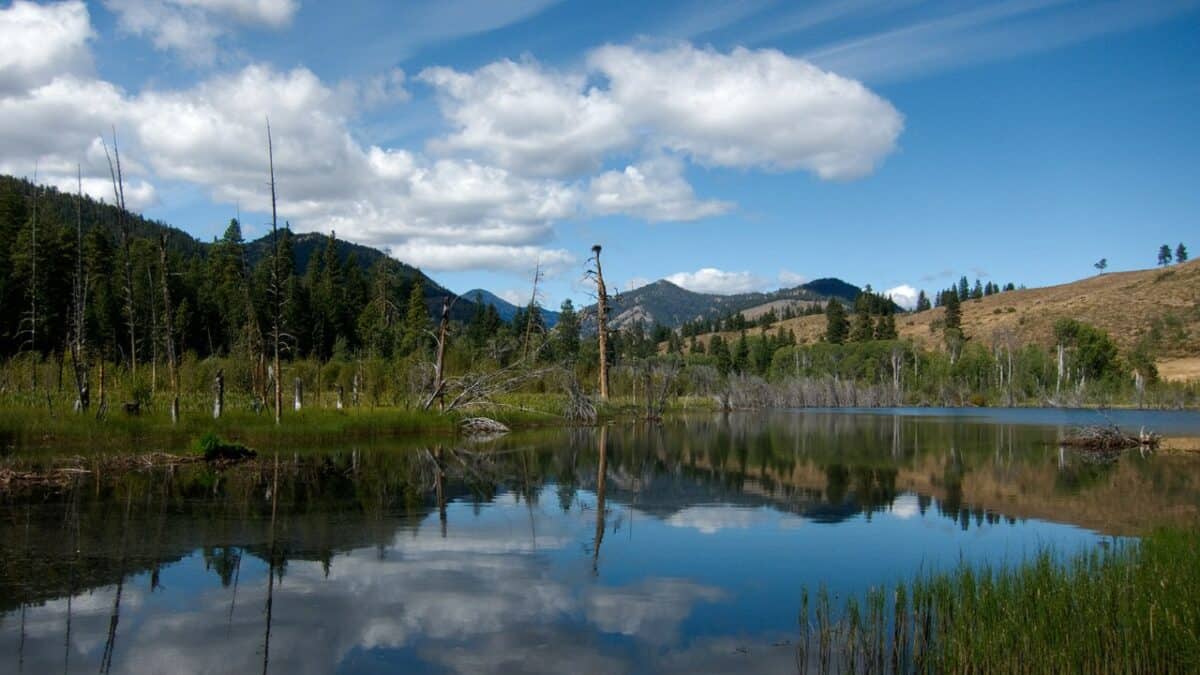
- Map
- Crowds: Moderate
- Water: No
- Restrooms: No
Next up is Beaver Lake, a small pull-off just off Burnt Mountain Road/U.S. Route 101. While it’s not the most picturesque camping area in this region, Beaver Lake is easy to access and offers a few free camping spots.
This place is an excellent option if you’re road-tripping around the Olympic Peninsula. However, it may not be the best choice if you’re seeking solitude.
Hamma Hamma River
- Map
- Crowds: Moderate
- Water: No
- Restrooms: No
If you keep driving past Lena Creek Campground, along NF-25/Hamma Hamma Road, you’ll find that the scenic Hamma Hamma River Valley has some excellent spots for dispersed camping.
While it’s true that most of these places are simple pull-outs, they are all very close to Lena Lake trailhead as well as to the river itself. However, they cannot accommodate larger trailers and RVs. These sites are best suited for smaller vans and tents.
Forest Road 29
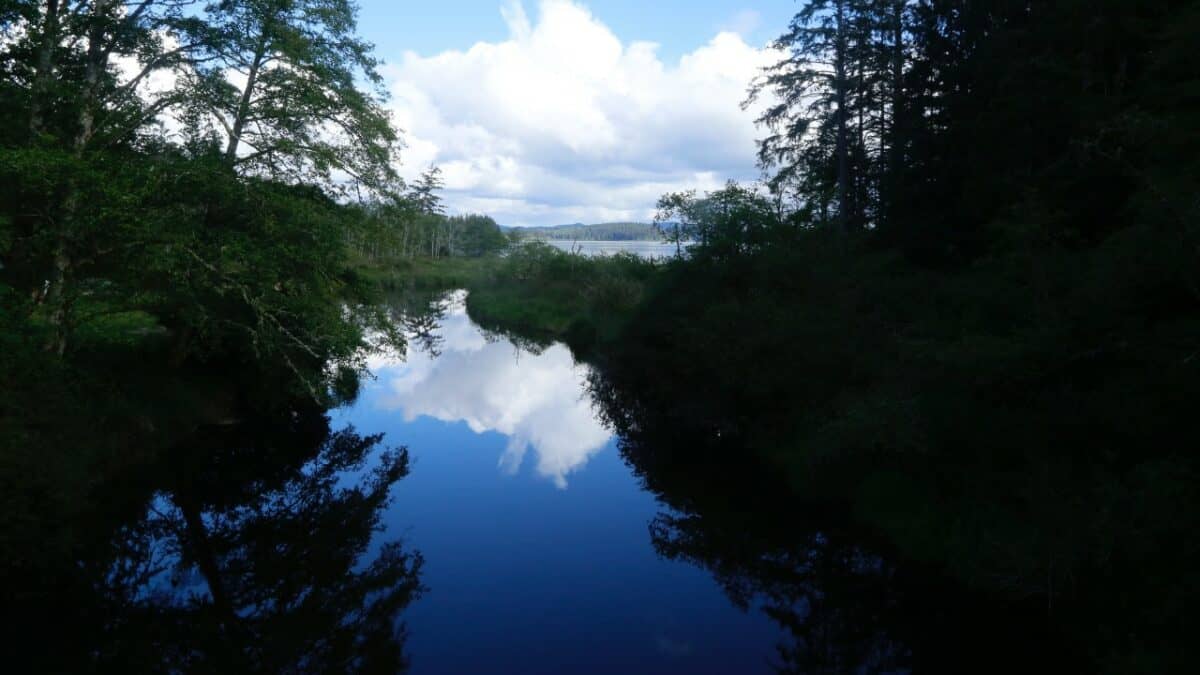
- Map
- Crowds: Busy
- Water: No
- Restrooms: No
The last Olympic National Forest dispersed camping area I’ll be taking a look at is situated in the forest’s northwestern section. This is a USFS-managed road along which outdoor enthusiasts can park their recreational vehicles and enjoy the region’s sights, smells, and sounds.
Forest Road 29 features several pull-outs that easily accommodate larger trailers and RVs. The area I’ve linked on the map above is the most popular due to its spaciousness. If you find it crowded, just keep driving along the road until you find a nice place to pull off at.
While here, make sure to check out the nearby Olympic Discovery Trail. This trail crosses the entire Olympic Peninsula and is filled with views of majestic forests, pristine lakes, fast-flowing rivers, caped peaks, and ocean vistas.
If you are looking for a camping adventure in Washington state, check out our post on free camping near Mt Rainier as well.
The Takeaway
As you can see, there is no shortage of established campsites and dispersed camping areas in Olympic National Forest. After all, it’s one of the most popular natural regions in the state, visited by tens of thousands of outdoor enthusiasts every year for a good reason.
Hopefully, this guide has helped you choose an ideal location for your Olympic National Forest camping adventure. Stay responsible and minimize environmental impact by leaving your camping spot in a better state than you found it!

I love hiking, backpacking, and camping. From the Camino de Santiago to the West Highland Way in Scotland or simply a great day hike on the weekend. Hiking refreshes me, my mind, and keeps my body reasonably fit. So far I have walked three Camino routes and many other long distance hikes in the UK, Canada, and around the rest of Europe. One of the best was my hike up Ben Nevis.

